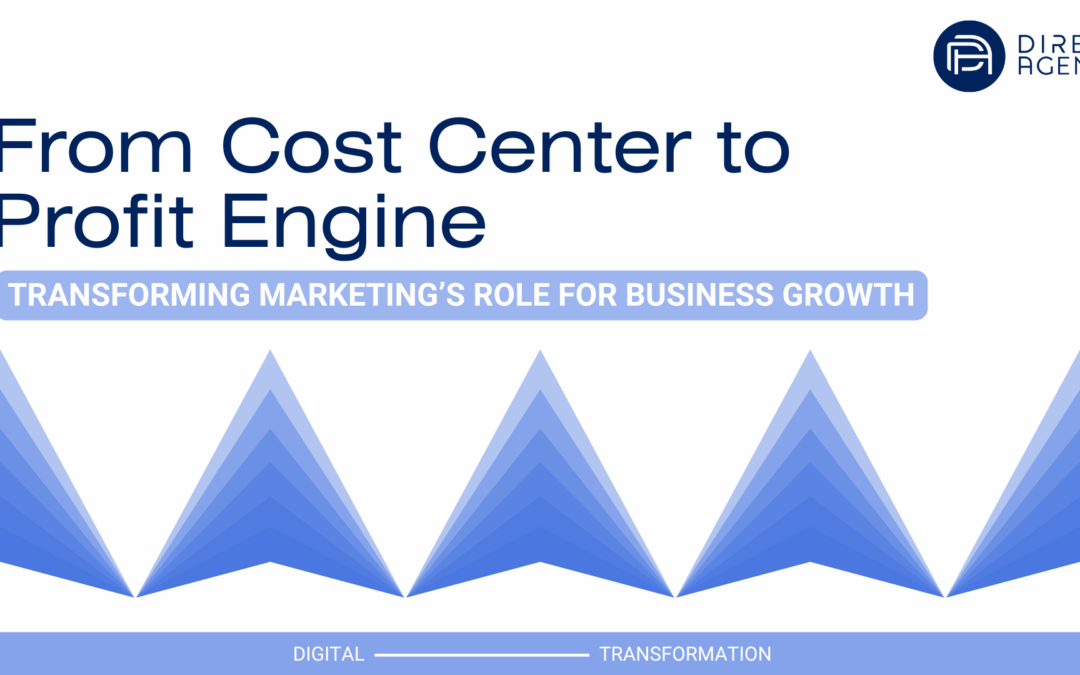There’s a growing recognition inside forward-thinking companies that marketing, when built the right way, should be treated as a core lever of business performance, not just an operating expense, but recognition alone isn’t enough. The shift from cost center to growth driver requires more than strong creative, channel expertise, and surface-level reporting. It requires structural change.
At its core, this is about reframing how marketing is expected to contribute, and how it’s equipped to do so. The marketing teams making the biggest impact today are the ones connecting their work directly to business outcomes: revenue, retention, margin, and long-term value creation.
From Activity to Accountability
Ty Heath, in a recent article for LinkedIn’s B2B Institute, made a clear case: marketing should be treated like a capital investment. It’s a powerful idea, but for many organizations, it’s still aspirational. That’s often because marketing activities are measured in terms that don’t translate to the language of the business.
This disconnect isn’t about a lack of effort. It’s about a lack of alignment. When marketing is optimized for ROAS but finance is measuring margin, or when brand investment is judged without a downstream lens, it becomes easy to deprioritize marketing, even when it’s working.
The solution isn’t just better data. It’s a better system. One that clarifies how marketing contributes across the entire funnel and how it supports sustainable, profitable growth, not just short-term wins.
A Framework for Profitable Growth
Over the past several years, we’ve seen firsthand what separates marketing organizations that scale from those that stall. It often comes down to three key shifts:
1. From ROAS to Return on Margin
Smart teams are moving beyond acquisition cost to focus on the value of the customers they’re acquiring, and the unit economics behind the channels bringing them in.
2. From Creative Output to Creative Intelligence
It’s not enough to launch content. The real unlock comes from knowing which messages and formats drive high-value actions, and continuously testing and iterating based on that feedback loop.
3. From Disconnected Channels to Integrated Investment Strategy
Brand and performance are not at odds. The strongest growth strategies treat them as interdependent and optimize investment across both, with visibility into short- and long-term outcomes.
These principles are core to how we operate at Direct Agents, but more importantly, they’re becoming foundational across the most resilient marketing teams we work with.
Why This Matters Now
Economic pressure didn’t invent the need for accountability, but it has accelerated it. CMOs are expected to answer tougher questions, defend larger investments, and forecast more accurately. Boards and CFOs want clarity, not just performance, but predictability.
The marketing organizations that are weathering this moment best aren’t just making cuts. They’re rethinking structure. They’re reallocating based on LTV, margin, and efficiency. They’re aligning more closely with finance, operations, and product, and they’re redefining the role marketing plays in driving the business forward.
We’ve helped clients reforcast entire budgets around contribution margin rather than channel performance. We’ve restructured creative testing to prioritize messaging that drives real financial results, and we’ve equipped CMOs with the models and insights they need to make a stronger case in the boardroom for more investment, not less.
This is what it looks like when marketing is treated as a business driver. And it’s where agency partnership becomes mission-critical.
Our Takeaways:
If marketing is going to be treated as a growth driver, it needs to operate like one. That means:
– Reframing goals around business impact, not media efficiency: Start by aligning with your CFO on what success looks like, margin, LTV, contribution, or payback period, and make those your north star.
– Auditing how you measure value: Move beyond ROAS, conversions, or MQLs. Build reporting that ties marketing performance to pipeline, revenue, and retention.
– Fixing disconnects between brand and performance: Stop running them as separate efforts. Look at how your investments ladder up to awareness and conversion, and plan budgets accordingly.
– Treating creative as data, not just output: Build feedback loops around message performance. Use structured testing to identify what moves high-value behaviors.
– Making your agency partners accountable to the same outcomes: If they’re not helping you prove financial impact, they’re not helping you grow.
The bottom line: marketing can’t just be visible. It has to be viable, strategically, financially, and organizationally.
In today’s shifting digital landscape, we help brands navigate complex challenges, whether it’s adapting to new consumer behaviors, maximizing marketplace presence, or scaling with precision. Our agile team leverages our proprietary AI tools, real-time analytics, and omnichannel expertise to deliver measurable outcomes.
Want to learn more about how we’re helping brands navigate SEO and how we can transform your strategy? Please message us at [email protected]
Jackson Richards, VP of Strategy, Direct Agents

